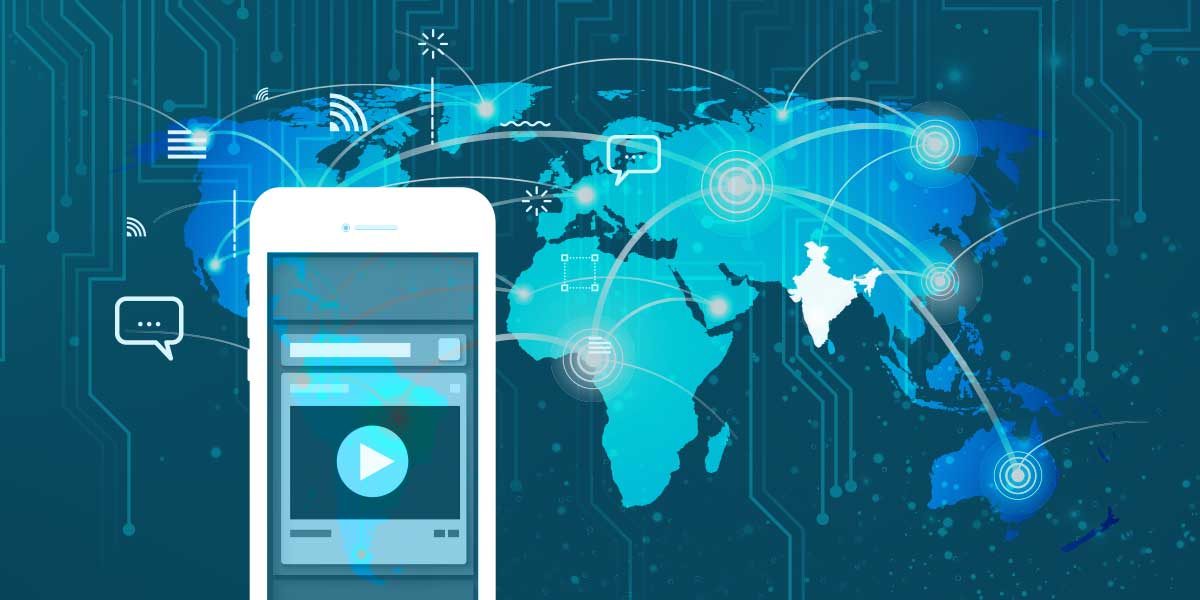With its inception around 5 decades ago, Internet has changed the world. It is one of the defining invention in the previous century which shall be remembered by the historians. While the dividends of internet are many and have been heavily studied, a large portion of the developing world is now reaping the benefits of the transformation capabilities of Internet. This blog discusses the impact of internet adoption in India and the true tangible changes it is bringing to the life of people.
With over 650 million phone users and 300 million smartphone users, India is now the second largest user of smartphones behind China. With falling smartphone prices and cheaper data connections, the Indians have taken to mobile internet as a fish to water.
The impact of enthusiastic adoption of mobile internet is hard to miss. With users flocking to online platforms for everyday needs like shopping, banking and ride hailing services, business models have been forced to adapt, change or perish. Increasing popularity of these platforms have given rise to billion dollar start-ups which are not only competing with their global competitors on their home turf, they are equally confident in taking them on foreign soil. Companies like Ola (a ride hailing service), Zomato (food-ordering) are competing with the Ubers and Grubhubs across geographies.
Similarly, for the residents, the long queues for availing government services are a distant memory. With government bringing their platforms online, the bureaucracy and the long service times are rapidly reducing. By changing the model of Public Distribution System and utilising the power of internet banking, government aids are now much better targeted and lead to less losses in distribution. Similar impact has been felt in case of disaster management and early warning systems which leads to saving lives and having an efficient rehabilitation program.
Similarly, a very large and important impact of Internet has been in education in India. According World Economic Forum findings, the nation has become the second largest market for e-learning after the US. Typically, a classroom only provides lectures for about an hour. These are also shared with 60 other students. Whereas services provided by online education providers are available at an individual level, around the clock. This is helping students in rural areas which were used to inefficient schooling systems due to lack of teachers and non-standardised teaching methodologies. With an ability to go beyond the prescribed courses, internet based learning are giving a wider and approachable platform to students.
Internet has acted as a tool of rapid advancement for a large population which had to face challenges in accessing the benefits the 21st century has brought. It has acted as a levelling tool which has made individuals realise the potential and the opportunities which lie ahead of them. With projections of almost double smartphone users by 2022 (600 mn), we are in a unique time and position to witness the domino effects of efficient technology adoption. While the country missed out on the industrial revolution, wide raging efforts are being undertaken to ensure this opportunity stands out.
Links:
https://www.statista.com/statistics/274658/forecast-of-mobile-phone-users-in-india/
https://www.bbc.com/news/business-45095091
https://www.similarweb.com/blog/food-delivery-india-zomato-swiggy


Hey Anjali, thanks for sharing your post. I completely agree about the technological changes that we have witnessed in the past few years and their impact on day-to-day lives of individuals. I thoroughly enjoyed your post and it drew my special attention on the changes in government sector. I lived in India for 8 years and was always dreadful of going to any public office for one would need to spare the entire day to stand in queue before being attended to. The implementation of digital recognition (thumbnail impression) coupled with integration with major public offices made it really easy for one to authenticate himself/herself without the need to carry a handful of papers proving one’s authenticity. The online platform allowed for speered processing times and a huge reduction in the waiting queues on-premise. I liked the idea of assessing the overall impact of internet technology at a high-level.